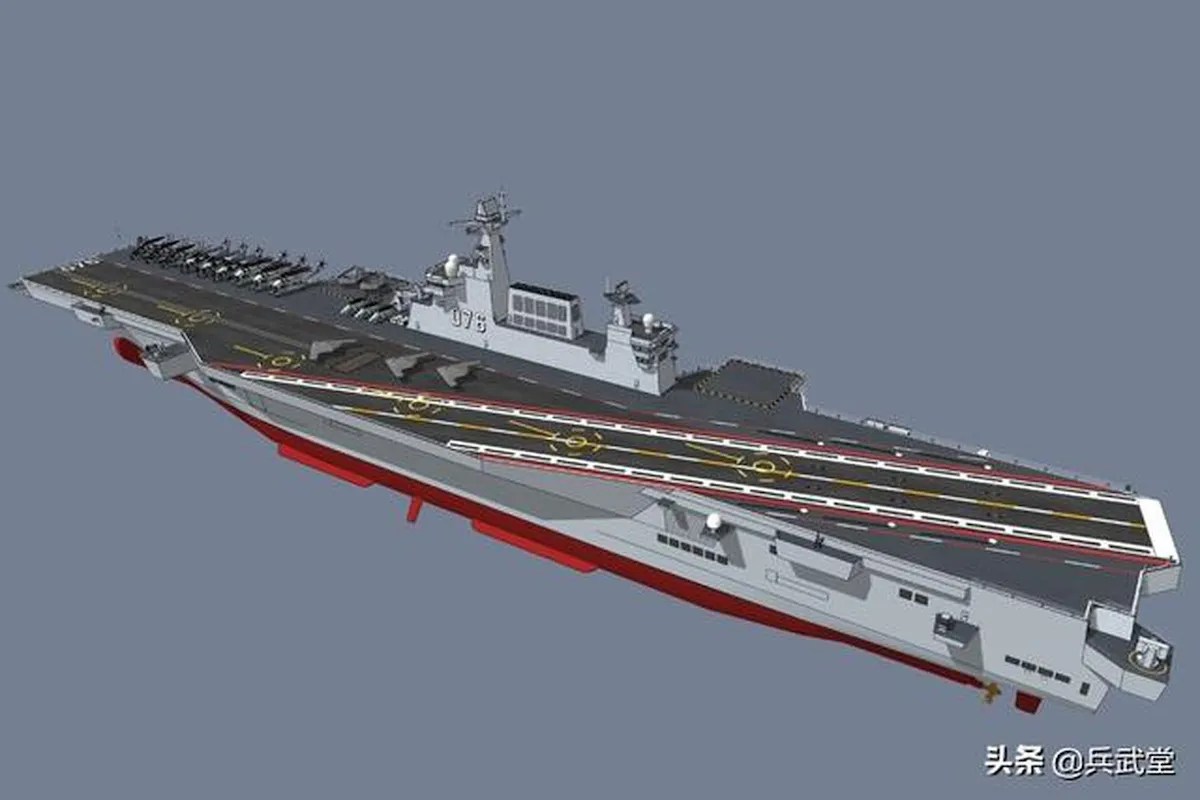Beijingwalker
Elite Member
- Nov 4, 2011
- 76,758
- 104,227
- Country of Origin

- Country of Residence

Redefining Naval Warfare — China’s PLA-N Gets Ready To Deploy ‘Drone Swarms’ In Minutes From New Vessel
By Shubhangi Palve-September 24, 2024
Some call it a light aircraft carrier, others claim it’s a drone carrier, but all agree: it’s unlike anything the world has seen before. As the first of its kind, this mysterious vessel is set to redefine naval warfare.
Recently, a five-month standoff between Manila and Beijing over a contested maritime feature in the South China Sea took a new turn when the Philippine Coast Guard flagship, BRP Teresa Magbanua (MRRV-9701), withdrew from the area and sailed into the Sulu Sea.
This is just one example of the growing tensions in the Indo-Pacific region. Meanwhile, media reports are speculating that China could launch its fixed-wing drone carrier, the Type-076, by 2025. Its debut will undoubtedly prompt Indo-Pacific nations to reassess their military strategies.
Type-076: Waves Of The Future
The Type-076, a successor to the Chinese Navy’s Type-075 amphibious assault helicopter carrier, has been a topic of discussion for nearly four years across various levels and platforms.In September 2023, Shanghai’s Hudong-Zhonghua Shipyard publicly announced the start of construction on the first Type 076, signaling the completion of the design phase and the transition to building the vessel.
In May 2024, Satellite images from the Jiangsu Dayang shipyard, nestled far upriver from Shanghai on the Yangtze River, revealed China’s best-kept secret: a new aircraft carrier designed specifically for fixed-wing unmanned aerial vehicles (UAVs).
According to the report, “this ‘mystery ship,’ which was launched in December 2022 but only recently reported, differs from standard US or Chinese aircraft carriers. It is notably smaller—about one-third the length and half the width of typical supercarriers—and features an ‘anachronistic’ straight deck layout that prevents simultaneous takeoff and landing operations.”
J. Michael Dahm, a senior resident fellow at the Mitchell Institute, Melbourne, notes that the shipyard where it is being built is Jiangsu Dayang Marine. It is the same shipyard that has previously built simulated enemy ships for the PLAN. All these years, China has been simulating Western and Western-leaning naval ships in its weapons testing program.
The Catamaran Giant
The launch of China’s third aircraft carrier, the Type-003 Fujian, impressed many with its advanced electromagnetic catapult system, and the world took note of China’s naval might.However, China’s fourth carrier stands out from the previous three with its unique catamaran hull design, which offers a larger deck area.
A catamaran hull in an aircraft carrier refers to a design featuring two parallel hulls united by a platform instead of a single central hull. The twin-hull design provides a larger and more stable deck area, which can be useful for accommodating various aircraft and equipment.
Despite this, it isn’t suited for high-tempo or extended flight operations due to a hangar deck below the flight deck and the flight deck being lower than other carriers. These features have led to speculation that this fourth carrier might be a dedicated drone carrier for the People’s Liberation Army Navy as China looks to push military drone usage to the next level.

File Image: Chinese Socia Media
Fixed-Wing Drone Carrier
The real magic happens below deck. The Type 076 features an advanced catapult system similar to the Electromagnetic Aircraft Launch System (EMALS).This 100-meter catapult, akin to those on the Chinese Navy’s new CV18 Fujian aircraft carrier, is a defining feature of the vessel. Notably, the trench designed for the electromagnetic catapult will enable the launch of fixed-wing aircraft at full load capacity, turning this amphibious assault ship into a launchpad for aerial domination.
This cutting-edge technology enhances the deployment of Vertical/Short Takeoff and Landing (V/STOL) aircraft, setting the Type 076 apart from traditional amphibious assault ships. According to reports, this carrier can operate UAVs and smaller airframes with a wingspan of around 65 feet.
By integrating an advanced catapult system, the Type 076 ushers in a new era of air support for amphibious operations, allowing faster and more flexible deployment of aerial assets.
Its ability to deploy swarms of drones for electronic warfare and precision strikes could tip the balance in China’s favor in hotly contested areas like the South China Sea.
Electronic Blue Force
As tensions simmer with Japan in the northeast, Taiwan in the east, and the Philippines in the South China Sea, coupled with US naval dominance, the region is a critical global hotspot that impacts world peace.The arrival of China’s new warship couldn’t have come at a more critical time, making efforts to counter China’s rapid militarization increasingly challenging.
In the South China Sea, where China is embroiled in territorial disputes, the Type 076 could bolster its power projection and assert control over contested waters. Its ability to deploy unmanned aerial vehicles (UAVs) for electronic warfare and direct strikes could significantly enhance China’s operational reach in these contested areas.
This carrier stands apart from existing naval systems worldwide, offering unique capabilities that enhance its intelligence, surveillance, and reconnaissance (ISR) abilities. As China progresses on its path to becoming a “Blue Water Navy,” this vessel is poised to play a significant role.


